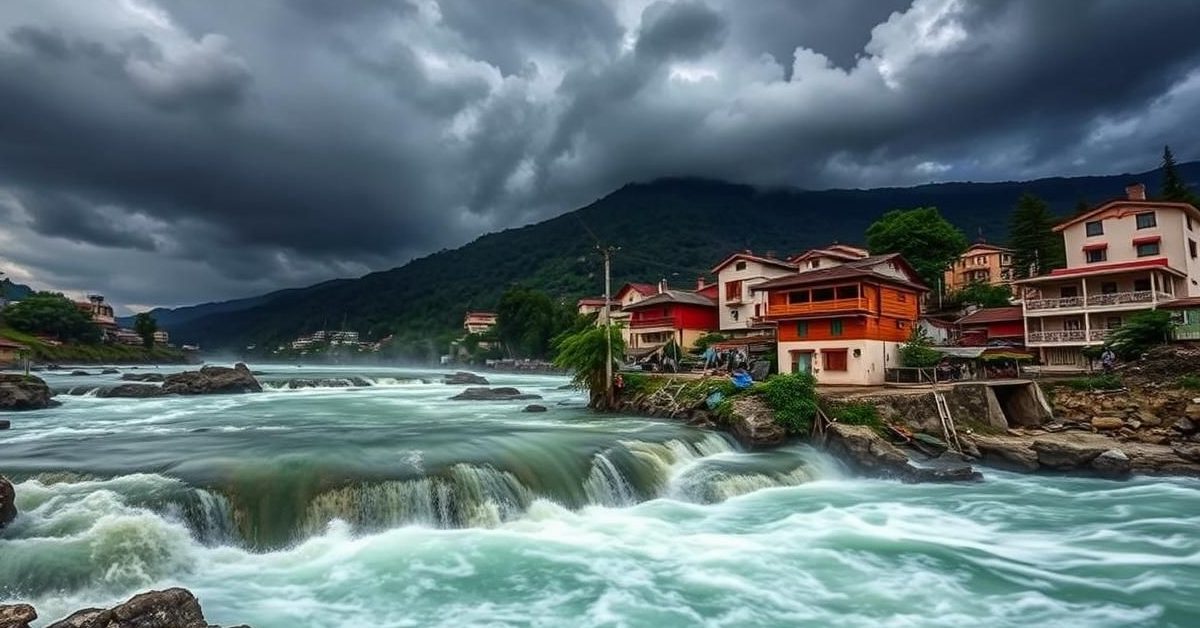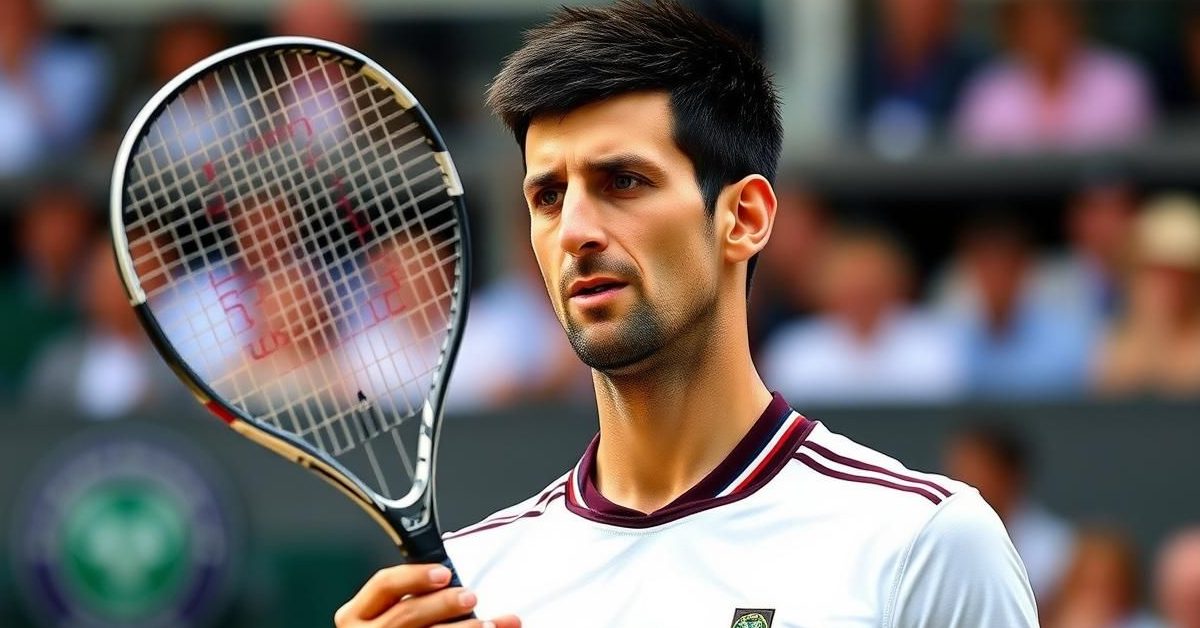India-China Relations at a Critical Juncture: Rajnath Singh’s Call for a ‘Structured Roadmap’
Eight months after disengagement efforts in the volatile Line of Actual Control (LAC) in Eastern Ladakh, India’s Defence Minister Rajnath Singh delivered a poignant message to his Chinese counterpart, Admiral Dong Jun. During their recent interaction, Singh underscored the urgent need for a “structured roadmap of permanent engagement and de-escalation,” pushing for a definitive “permanent solution of border demarcation.” This significant call highlights the enduring tensions and the imperative for lasting peace along the disputed frontier.
The dialogue unfolded on the sidelines of the Shanghai Cooperation Organisation (SCO) Defence Ministers’ Meeting in Qingdao. Minister Singh emphasized the critical necessity of “bridging the trust deficit created after the 2020 border standoff, by taking action on ground.” While troops have disengaged from certain points, a substantial force of 50,000-60,000 soldiers reportedly remains stationed on both sides of the LAC in the region, reflecting a lingering de-escalation challenge.
The concept of a “structured roadmap” marks a novel and crucial formulation in the ongoing efforts to normalize India-China relations. Previous discussions primarily revolved around confidence-building measures and maintaining tranquility, but this new emphasis on a detailed plan signifies a more proactive approach towards achieving full de-escalation. The recent resumption of the Kailash Mansarovar Yatra, a significant pilgrimage, was acknowledged by Singh as a step towards restoring a “semblance of normalcy” in bilateral ties.
Understanding the Line of Actual Control (LAC) and Broader Dynamics
The LAC serves as the de facto demarcation between Indian and Chinese controlled territories. Its length remains a point of contention, with India asserting it spans 3,488 km, while China claims it is merely around 2,000 km. This vast frontier is broadly divided into three critical sectors: the eastern sector covering Arunachal Pradesh and Sikkim, the middle sector encompassing Uttarakhand and Himachal Pradesh, and the western sector located in Ladakh. Each sector presents unique geographical and strategic complexities, contributing to the overall challenge of border management.
The Shanghai Cooperation Organisation (SCO): A Regional Powerhouse
The origins of the SCO trace back to the “Shanghai Five” group formed in 1996, comprising China, Russia, Kazakhstan, Kyrgyzstan, and Tajikistan. This alliance emerged from concerns over extremist religious groups and ethnic tensions following the dissolution of the USSR in 1991, aiming to foster cooperation on security matters.
The SCO officially evolved into an international organization on June 15, 2001, in Shanghai, welcoming Uzbekistan as its sixth member. Its Charter, signed in St. Petersburg in June 2002, became effective on September 19, 2003. Over the years, the SCO has expanded its mandate, including plans to combat international drug trafficking, often a funding source for global terrorism. Today, the SCO boasts 10 member states: India, Iran, Kazakhstan, China, Kyrgyzstan, Pakistan, Russia, Tajikistan, Uzbekistan, and Belarus. Both India and Pakistan gained full membership in 2017, significantly broadening the organization’s regional influence.
Revolutionary Breakthroughs: GLP-1 Drugs Reshape Obesity and Diabetes Treatment
A monumental shift is underway in the landscape of obesity and type-2 diabetes management, spearheaded by the advent of GLP-1 (glucagon-like peptide-1) receptor agonist drugs. Pharmaceutical giants Novo Nordisk and Eli Lilly have recently introduced their blockbuster injectables, semaglutide and tirzepatide, respectively, to the Indian market, nearly four years after they transformed treatment paradigms in the United States. These compounds have proven remarkably effective, leading to an astonishing 15% to 20% body weight loss, a level previously achievable primarily through bariatric surgeries.
How These Incretin Mimickers Work Wonders
Semaglutide and tirzepatide belong to a cutting-edge class of medications that mimic naturally occurring gut hormones known as incretins. GLP-1 is one such incretin. Their multifaceted mechanism of action is what makes them so potent:
* **Insulin Secretion:** They enhance the body’s natural insulin production, facilitating glucose uptake by cells for energy.
* **Glucagon Inhibition:** They suppress the secretion of glucagon, a hormone that prompts the liver to release stored glucose into the bloodstream, thus preventing blood sugar spikes.
* **Gastric Emptying:** These drugs slow down the rate at which food leaves the stomach, leading to a more gradual rise in blood glucose and prolonged feelings of fullness.
* **Appetite Suppression:** Crucially, they signal to the brain that the body is satiated, significantly reducing appetite and overall food intake.
While both semaglutide and tirzepatide emulate GLP-1, tirzepatide offers an added advantage by also mimicking the action of another hormone, glucose-dependent insulinotropic polypeptide (GIP). This dual-agonist approach has shown even more significant weight loss, with some studies indicating up to 20% body weight reduction, and it has also gained approval for treating obesity-related obstructive sleep apnoea.
A Century of Discovery and Future Horizons
The existence of incretins was noted as early as 1906, though their potential was largely overshadowed by the groundbreaking discovery of insulin in 1921. For a century, insulin, produced by the pancreas, has been the cornerstone of diabetes management. However, its administration presents a fundamental challenge: precise blood glucose regulation, as overdosage can lead to life-threatening drops in sugar levels. GLP-1 drugs offer a more sophisticated approach by leveraging the body’s own regulatory mechanisms.
The future of GLP-1 therapies is rapidly evolving. Oral forms, such as orforglipron and danulipron, are on the horizon, promising easier administration. Furthermore, dual-target drugs like Survodutide and Mazdutide, which act on both GLP-1 RA and glucagon receptors, are currently in phase 3 clinical trials, signaling continued innovation in this transformative field.
The Coastline Paradox: India’s Unveiling of a “Longer” Shore
India’s coastline, a vital artery for trade, defense, and livelihoods, has just become significantly “longer” – by over 3,500 km, or nearly 50% more than its previously recorded length. This isn’t due to territorial expansion, but rather a fascinating phenomenon known as the “coastline paradox,” coupled with the power of modern geospatial technology. The official length, once cited as 7,516 km based on 1970s measurements, has now been reassessed at a staggering 11,098 km.
Unraveling the Mystery of the Expanding Shore
The core reason for this dramatic increase lies in the scale of data utilized for measurement. The earlier figures relied on data at a scale of 1:4,500,000 (one to forty-five lakh) or smaller. The recent, more accurate assessment, however, leveraged higher-resolution data at a scale of 1:250,000 (one to 2.5 lakh).
Think of it this way: measuring a coastline with a long, inflexible ruler (low resolution) will smooth over many small bays, inlets, and rocky outcrops, effectively shortening the perceived length. But using a much smaller, more flexible ruler (high resolution) allows for the capture of every intricate bend, curve, and minute detail of the land’s edge. These seemingly minor irregularities, when aggregated over thousands of kilometers, contribute substantially to the total length.
Furthermore, the shift from conventional, manual calculations to advanced Geographic Information System (GIS) software has played a pivotal role. GIS platforms are adept at processing and mapping the highly irregular features of a coastline with unprecedented precision. Another significant factor in the new calculation was the inclusion of numerous offshore islands whose coastlines were either overlooked in previous smaller-scale data or simply impractical to measure using older manual methods.
While this new, expanded length offers a far more accurate representation of India’s shoreline and holds immense administrative and strategic significance, it’s crucial to understand that the “ground situation” hasn’t changed. The physical landmass remains the same. The “coastline paradox” dictates that highly irregular features like coastlines inherently lack a finite, absolute length. Their measured length is always dependent on the scale or resolution at which they are observed, meaning that with even finer measurements, the length could theoretically extend indefinitely. This intriguing paradox also applies to other complex natural formations, such as river networks and mountain ranges.
Iran’s Nuclear Puzzle: The Quest for a New Deal Amidst Escalation
The recent American strikes against Iran’s key nuclear facilities – Fordow, Natanz, and Isfahan – have dramatically intensified global scrutiny on Tehran’s atomic ambitions, raising critical questions about the extent of the damage, the fate of Iran’s highly enriched uranium (HEU), and the precarious future of US-Israel-Iran relations. Veteran analyst Kanti Bajpai highlights the complexity of assessing the effectiveness of these precision strikes, particularly on Fordow, where twelve GBU-57 bombs targeted main ventilation shafts to neutralize deeply buried centrifuges and control centers. The functional obliteration of Fordow, if confirmed, could render the centrifuges inoperable over time, a significant strategic outcome.
The Dangerous Calculus of Highly Enriched Uranium (HEU)
A major concern revolves around Iran’s stockpile of highly enriched uranium (HEU), a critical component for nuclear weapons. The question of what the United States and Israel might do once the HEU is located is fraught with peril. Direct strikes on HEU facilities could unleash “dirty bombs,” contaminating vast areas with radioactive materials without a nuclear chain reaction. Such an action would trigger widespread international condemnation and potentially invite retaliatory strikes, including against Israel’s own nuclear reactors, a scenario both sides would likely wish to avoid.
The Elusive Path to a New Nuclear Agreement
The imperative for a successor to the Joint Comprehensive Plan of Action (JCPOA) has become more urgent than ever. While some US officials, including former President Donald Trump, have drawn parallels to the post-WWII state of Japan, depicting Iran as similarly “prostrate,” this comparison is deeply flawed. Iran remains a sovereign, un-occupied nation. The intricate geopolitical landscape necessitates genuine negotiations, not imposed solutions.
For a new nuclear deal to materialize, several daunting conditions must be met: a lasting ceasefire, the emergence of a stable authority figure in Iran capable of delivering on an agreement, and potentially, significant economic incentives from the US, such as the lifting of sanctions. The stakes are extraordinarily high, not only for regional stability but for the global non-proliferation regime.
Nuclear Technology: A Double-Edged Sword
Nuclear technology, since its foundational discoveries by Otto Hahn and Fritz Strassmann in 1938, has profoundly reshaped the modern world. It harnesses immense energy from atomic nuclei through two primary processes:
* **Nuclear Fission:** The splitting of a heavy atomic nucleus into lighter ones, releasing vast energy. This was first practically applied in the Manhattan Project, culminating in the atomic bombings of Hiroshima and Nagasaki in 1945, ushering in the “nuclear age.”
* **Nuclear Fusion:** The merging of two lighter nuclei to form a heavier one, also releasing enormous energy. While still largely in research phases, fusion holds promise for clean, abundant power.
International efforts to regulate this potent technology began with the establishment of the International Atomic Energy Agency (IAEA) in 1957, promoting peaceful nuclear use. The Nuclear Non-Proliferation Treaty (NPT), which came into force in 1970, aims for non-proliferation, disarmament, and the peaceful application of nuclear energy, embodying the global community’s hope and concern regarding this transformative force.
Boosting Potato Power: India to Host Global Research Center in Agra
In a significant stride for agricultural innovation, India is set to host a regional wing of the International Potato Center (CIP), a renowned Peru-based research organization dedicated to potato and sweet potato advancement. The Union Cabinet’s approval on June 25 greenlights the establishment of the CIP-South Asia Regional Center (CSARC) in Singna, Agra district. This strategic move aims to revolutionize potato cultivation not only across India’s key potato-producing states like Uttar Pradesh, Bihar, and West Bengal but also throughout the broader South Asian region.
Addressing India’s Potato Paradox
Despite being the world’s second-largest potato producer (after China, which leads both production and consumption), India’s average potato yield stands at a modest 25 tonnes per hectare—roughly half of its potential yield exceeding 50 tonnes per hectare. A primary culprit for this disparity is the chronic scarcity of high-quality seeds. India’s sweet potato yield faces similar challenges, hovering around 11.5 tonnes per hectare against a potential of 30 tonnes.
The establishment of CSARC promises to directly tackle these issues. By providing India with access to CIP’s vast global collection of germplasm (genetic material for breeding), the center is expected to dramatically boost domestic potato seed production, thereby reducing India’s reliance on imports from neighboring countries. This initiative follows the successful model of China’s own CIP wing, the China Center for Asia Pacific (CCCAP), established in Yanqing, Beijing, in 2017 to serve East Asia and the Pacific.
Uttar Pradesh Chief Minister Yogi Adityanath had actively championed the project, urging Union Agriculture Minister Shivraj Singh Chouhan to expedite its establishment, recognizing its immense potential for regional farmers.
A Hub for Agricultural Excellence
The proposed Agra center will mark India’s second major international agricultural research institution, building on the success of the Philippines-based International Rice Research Institute (IRRI) which established its South Asia Regional Center (IRRI-SARC) in Varanasi in 2017. These global collaborations underscore India’s commitment to leveraging international expertise for enhancing agricultural productivity and food security.
Currently, India’s domestic research into tuber crops is primarily conducted by the Shimla-based ICAR-Central Potato Research Institute (CPRI) focusing on potatoes, and the Thiruvananthapuram-based ICAR-Central Tuber Crops Research Institute (CTCRI) dedicated to sweet potatoes. The CSARC will complement these existing efforts, providing a new layer of advanced research and development for two of the world’s most vital food crops.
India’s Economic Snapshot: Navigating Current Account Surpluses and Capital Flows
India’s external sector has demonstrated resilience, recording a notable current account surplus of $13.5 billion, or 1.3% of Gross Domestic Product (GDP), during the January-March 2025 quarter. This marks a significant improvement from the $4.6 billion surplus (0.5% of GDP) in the corresponding period of the previous fiscal year. For the entire fiscal year 2024-25, India’s current account deficit (CAD) narrowed to $23.3 billion (0.6% of GDP), down from $26 billion (0.7% of GDP) in FY2023-24, primarily driven by robust net invisible receipts.
Decoding the Current Account and Capital Flows
The **current account** reflects a nation’s balance of trade in goods and services, as well as net earnings from investments and transfers. A surplus indicates that a country is earning more from its exports, services, and remittances than it is spending on imports and outbound payments. The **current account deficit (CAD)**, conversely, means a country is importing more than it exports, requiring capital inflows to finance the gap.
Beyond the current account, the **financial account** (often referred to as the capital account) records all international capital transfers. Key components influencing this account include:
* **Foreign Direct Investment (FDI):** Long-term investments made by entities in one country into another, often involving physical assets or significant ownership stakes. In January-March 2024-25, India saw a net FDI inflow of $0.4 billion, lower than the $2.3 billion a year prior. For the full FY2024-25, net FDI inflows stood at $1 billion, significantly down from $10.2 billion in FY2023-24.
* **Foreign Portfolio Investment (FPI):** Shorter-term investments in financial assets like stocks and bonds. Q4 FY2025 experienced a net FPI outflow of $5.9 billion, contrasting sharply with the $11.4 billion inflow in Q4 FY2024. Overall, FY2025 recorded a net FPI inflow of $3.6 billion, a substantial decrease from $44.1 billion in the preceding year.
* **External Commercial Borrowings (ECBs):** Loans raised by Indian entities from foreign sources. Net inflows under ECBs amounted to $7.4 billion in Q4 FY2025, up from $2.6 billion a year ago.
* **Non-Resident Deposits (NRI deposits):** Funds deposited by Non-Resident Indians. These recorded a net inflow of $2.8 billion in Q4 FY2025, lower than $5.4 billion in Q4 FY2024.
The Role of Foreign Exchange Reserves
The overall balance of payments is also reflected in changes to a country’s foreign exchange reserves. In Q4 FY2025, India saw an accretion of $8.8 billion to its foreign exchange reserves (on a Balance of Payment basis), compared to a more substantial accretion of $30.8 billion in Q4 FY2024. These reserves are crucial for managing currency fluctuations, financing imports, and instilling confidence in the economy.
Understanding Gross Domestic Product (GDP)
GDP is a fundamental macroeconomic indicator measuring the total market value of all final goods and services produced within a country’s geographical boundaries over a specific period, typically a year. It serves as a vital barometer of economic growth and facilitates comparisons between national economies.
GDP is calculated by summing the market value of all final goods and services (e.g., GDP = (q₁×p₁)+(q₂×p₂)+…+(qₙ×pₙ), where ‘q’ is quantity and ‘p’ is price). Crucially, GDP only accounts for newly produced goods and services within the defined period; for instance, the resale value of a house built in a previous year is not included, as its production did not occur in the current year of estimation.













